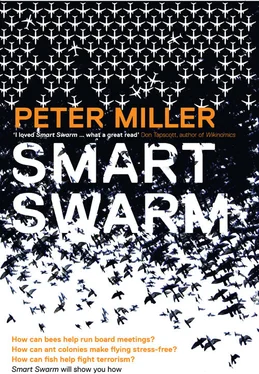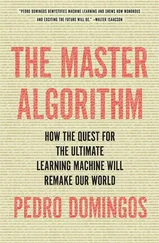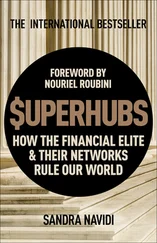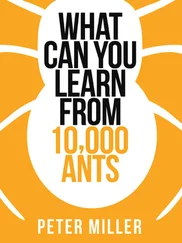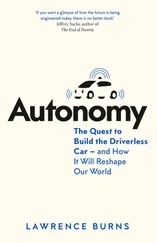Foreword by Don Tapscott, author of Wikinomics

For my wife, Priscilla, and my parents, Mary Lou and Bob
Cover Page
Title Page Smart Swarm Peter Miller Foreword by Don Tapscott, author of Wikinomics
FOREWORD BY DON TAPSCOTT
INTRODUCTION WHEN IN DOUBT, TURN TO THE EXPERTS
1 ANTS Who’s in Charge Here?
2 HONEYBEES Making Smart Decisions
3 TERMITES One Thing Leads to Another
4 BIRDS OF A FEATHER Secrets of Flocks, Schools, and Herds
5 LOCUSTS The Dark Sides of Crowds
CONCLUSION Doing the Right Thing
NOTES
INDEX
ACKNOWLEDGMENTS
Copyright
About the Publisher
Many people have studied how crowds, mass collaboration, business ecosystems, and networks transform the way organizations can do things better. I, for one, am convinced that we’re in the early days of the biggest change to the deep structures, architecture, and modus operandi of the century. But it often feels a lot more like an art than a science.
It turns out that nature can help us with the science.
When it comes to organizing ourselves in society, we often default to traditional hierarchies. This model has worked well as a way of systematizing work, establishing authority, deploying resources, allocating tasks, defining relationships, and enabling organizations to operate. Whether the ancient slave empires of Greece, Rome, China, and the Americas; the feudal kingdoms that later covered the planet; the corporations of industrial capitalism; or the bureaucracies of Soviet-style communism, hierarchies have been with us since the dawn of human history. Even the management literature today that advocates empowerment, teams, and networking takes the command-and-control method as a premise: Every person in an organization is subordinate to someone else. Hierarchies also define the relationships among companies. Every company is positioned in a supply chain whose subordinate companies it controls, and it is in turn beholden to the clients or customers it serves. In the old model of economic development, worker bees are to be supervised in their honey production.
The basic concept is here to stay, but traditional hierarchies have increasing limitations. More than twenty years ago, Peter Drucker described managers as “relays—human boosters for the faint, unfocused signals that pass for information in the traditional, pre-information organization.” Communication from the bottom up is often limited, except through formal labor-management relations. Hierarchies are typically bureaucratic, and employees lack motivation. Increasingly, they are insufficient as a way of organizing for the fast-paced economy where human capital needs to be unleashed for innovation, value creation, and customer relationships.
Then along comes the Internet, a communication medium that radically drops transaction and collaboration costs. This changes two very fundamental things about the protocol of enterprises. First, there are alternatives for organizing the internal workings of companies and other organizations. As Peter Miller describes, companies like Best Buy can harness the wisdom of many with techniques such as prediction markets to operate more effectively, and in doing so they challenge basic tenets of hierarchical control. Peers can collaborate across organizational silos. We can rethink power, now achievable through people rather than over people. Work can be organized on new project models, where the genius of human capital can be unleashed from its old command-and-control constraints. Employees can forge their own self-organized interconnections and form cross-functional teams capable of interacting as a global, real-time work force. Loosening organizational hierarchies and giving more power to employees can lead to faster innovation, lower cost structures, greater agility, improved responsiveness to customers, and more authenticity and respect in the marketplace.
Second, the boundaries of firms can become more porous, enabling powerful new approaches for orchestrating ability to innovate, to create goods and services, and even to produce public value. Rather than hierarchical supply chains, firms can build peer-to-peer networks where the roles, motivations, and behavior of the players are different—with dramatically better results.
What’s missing is a better science to all this, which is where Smart Swarm comes in. What could we learn from the dynamic, complex “collaborations” that exist in nature itself? What can nature tell us to help us bring complexity theory down to earth?
In the past, I and others have compared the networked organizations springing up to a skein of geese forming a V—acting in unison but without centralized control. Some years ago, Thomas Stewart, former editor of the Harvard Business Review , explained that the motion of the group is the aggregate result of the actions of each individual animal acting on the basis of its local perception of the world. There is no one leader. The bird at the front of the V has to work hardest because of wind resistance. But when it gets tired, another bird takes the leadership position. The birds have a collaborative leadership of sorts.
With the publication of Smart Swarm , for the first time, the lessons of flocks, schools, and colonies have been brought together in a readable text about how to get things done better. In a sense it’s a step toward creating a science of collaboration.
And where is all this going? Is it possible that as everyone connects through the global digital platform, we can begin to share not only information but also our ability to remember, process information, and even think? Is this just a fanciful analogy, or will we come to consider networking as the neural routes that are growing to connect human capital and transforming, again, quality (of connections) into quantity (something fundamentally new)?
You’ll enjoy this book, and not only for its speculation about the future. Rather, it’s full of practical guidelines about what nature can tell us about how to build better organizations today. How does your company embrace self-organization, diversity, knowledge, individual collaboration, and adaptive mimicking to outdo your competitors or deliver better value to society. And how can you avoid the dark side of smart swarming?
Read on.
Don Tapscott is the author of fourteen books about new technology in business and society, most recently (with Anthony D. Williams) Macro Wikinomics: Rebooting Business and the World (September 2010).
INTRODUCTION WHEN IN DOUBT, TURN TO THE EXPERTS
Not long ago Southwest Airlines was wrestling with a difficult question: Should it abandon its long-standing policy of open seating on planes? Of all the major airlines, Southwest was the only one that let passengers choose where to sit once they got on board. The airline had done it that way for more than thirty-four years, and it took pride in being an industry maverick. The company’s independent attitude had helped make it one of the largest airlines in the world. Southwest, remember, was the first carrier to encourage flight attendants to tell jokes in the air.
Lately, though, some customers, especially business travelers, had complained that the free-for-all to get on a Southwest plane was no fun. To obtain a good seat, travelers had to arrive at the airport hours before their flight to secure a place at the head of the line, or remember to print out a boarding document the day before from the company’s online reservation system. Some said the process made them feel more like cattle than customers, which, in the competitive airline business, was a problem. So Southwest put the issue on the table; if assigned seating would make people happier, the company was willing to consider it.
Читать дальше
